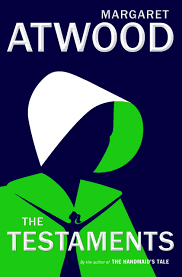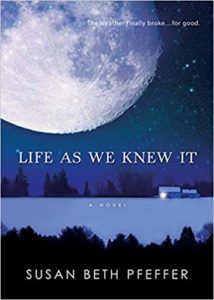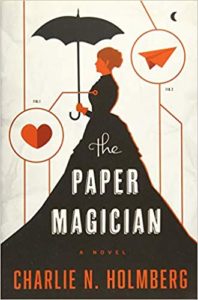Speculative Fiction for Your YA Classroom
A MiddleWeb Blog
 Speculative fiction, apocalyptic fiction, post-apocalyptic fiction, utopian and dystopian fiction: nine years ago I wrote a column on some of these and how to use them in the classroom for Education Week.
Speculative fiction, apocalyptic fiction, post-apocalyptic fiction, utopian and dystopian fiction: nine years ago I wrote a column on some of these and how to use them in the classroom for Education Week.
It’s telling to look back and see that nearly everything I said, almost a decade ago, still applies. Our kids are still reading tons of speculative fiction, and the genre’s popularity has only increased. Plus ca change…
Some advice I would offer to my younger self would be to be much clearer about how these genres intersect and overlap. This Wikipedia article does a nice job of explaining it.
Prefer a quick overview? Here’s a cheat sheet for readers/teachers who are also genre nerds:
Speculative fiction, through many iterations by such luminaries as Robert Heinlein and Margaret Atwood, can generally be used as an umbrella term for any fiction that has unreal elements: that is, that “speculates” on alternative realities, timelines, or worlds. This includes but is not limited to:
- Dystopian fiction, in which a critical societal or political reality affects human lives demonstrably for the worse;
- Apocalyptic/Post-apocalyptic fiction, in which a catastrophic event (sometimes natural, sometimes human-caused) occurs, and the story explores the aftermath (or the event itself); and
- Fantasy, a long-standing genre arguably re-invented by JK Rowling in 1997, where magic, mythical creatures or other imaginative inventions exist within the world of the book.
Speculative Fiction and Allyship
As you engage with students about the reading and writing of speculative fiction, current discussions about allyship might become part of the conversation.
Allyship is a proactive, ongoing, and incredibly difficult practice of unlearning and re-evaluating, in which a person of privilege works in solidarity and partnership with a marginalized group of people to help take down the systems that challenge that group’s basic rights, equal access, and ability to thrive in our society. (Source: Rochester Racial Justice Toolkit)
What does speculative fiction and its teaching have to do with allyship?
Without ever using the word, Vulture explores “allyship” in a fascinating article (“Who Gave You the Right to Tell That Story?”) that asks various authors to discuss their challenges with writing outside their identities; that is, trying to inhabit the skin of a person of a different ethnicity, gender, or culture. The writing course that inspired the article, “Writing the Other,” was founded and written by, unsurprisingly, two speculative fiction writers.
Imagining yourself with compassion and accuracy in the shoes of others, imagining yourself with compassion and accuracy in a different or alternative world — this is the heart of both speculative fiction and allyship. Conversations about speculative fiction lead easily to conversations about how their explorations of culture, religion, and politics play themselves out in the real world. And that, some say, is the main point of speculative fiction in the first place.
Current Concerns and Created Worlds
For us teachers, another aspect that excites me about this intersection (beyond how cool the books are) is how it can neatly sidestep some of the political entanglements that might get in the way of teaching books that more overtly take on issues of diversity and inclusion.
If you can’t teach The Hate U Give for whatever reason, try the following (or buy them for someone you love this holiday season). I’ve culled these five from my own reading, trustworthy award lists, and recommendations shouted to me from their rooms by my own two teens, Rebecca (16) and Ian (14).


The Compound, S.A. Bodeen (from my son): Ian gave me this title without hesitation, and my students enjoyed it as well. A teen boy and his family have lived in an underground bunker for many years, only to eventually discover that the threats they are living under are not ones they would have predicted. Lexile 570L.

The Giver, Lois Lowry (from the Newbery Awards): Yeah, yeah, I know. Everyone knows about this book. But here’s the thing: don’t teach it just because it’s a Newbery, has a movie, or is short. Teach it because it asks fundamental questions about how to manage pain and choice. Teach it because it presents ambiguous characters making thought-provoking decisions. Teach it because it questions what the meaning of freedom is. Great stuff. Lexile 760L.
What books of speculative fiction have become favorites of your students? Please share their titles in the comments below. And sources for book suggestions in this genre that you rely on.




































Great post, Dina. Thanks for tying “allyship” and speculative fiction together in this interesting way.
Middle and high school students who love speculative fiction should at least be aware of the work of N.K. Jemisin, the first writer ever to win three consecutive Hugo Awards for Novel of the Year. Jemisin, an African American woman, received these and other international awards for each of the three books in her Broken Earth trilogy.
Her world-building masterpieces challenge adult readers so they may not be well-suited for most middle teens. Perhaps some of the short stories in her 2018 collection How Long ‘Til Black Future Month? (winner of the 2019 ALA Alex Award) would be a good place to start, with teacher facilitation.
Octavia Butler (1947-2006), another African-American woman who won multiple awards for her work in speculative fiction, once described (according to Wikipedia) her three most loyal audiences as “black readers, science-fiction fans, and feminists.” Her books Parable of the Sower (1993 – nominated for the Nebula Award) and Parable of the Talents (1998 – winner of the Nebula Award) feature a young woman with hyper-empathy in the dystopian world of the 2020s and beyond.
Agreed! _The Children of Blood and Bone_ is another excellent one, by Tomi Adeyemi. There should be more writers of color on my list, but you’re right– I was trying to target 7-8th graders. There’s my next post!